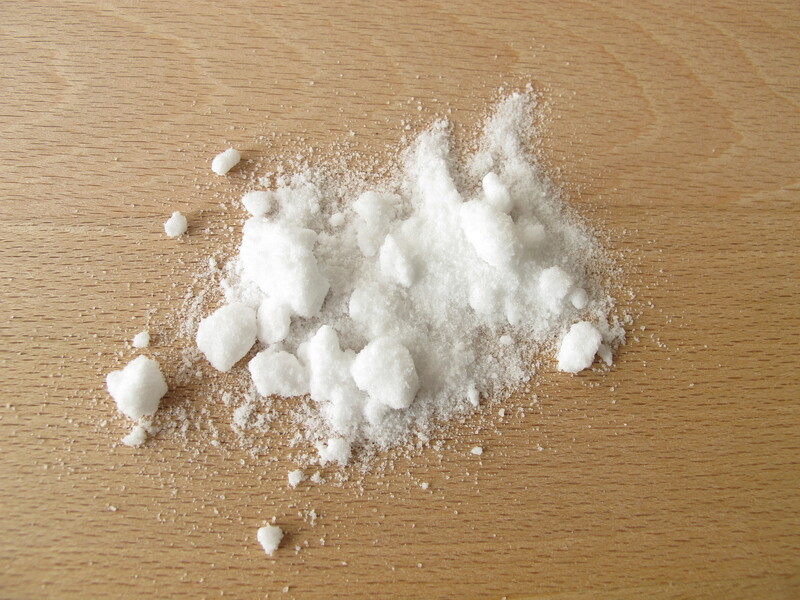Effective Techniques for Cleaning Mould Off Window Sills
Posted on 15/09/2025
Effective Techniques for Cleaning Mould Off Window Sills
Mould on window sills is a common yet troublesome issue faced by many homeowners. Not only does it look unpleasant, but mould can also present serious health risks and structural problems if not tackled promptly. To help you restore the cleanliness and appearance of your windows, we'll cover the most effective methods for removing mould from window sills and advice for preventing its return.

What Causes Mould to Grow on Window Sills?
Understanding why mould develops on window sills is the first step in combating it effectively. Condensation, lack of ventilation, and high humidity are the leading contributors to mould growth. When moist air settles on cooler surfaces like glass or wood, it creates an environment where mould spores can thrive, particularly in the colder months.
- Condensation: Repeated condensation leaves sills damp, encouraging mould spores to proliferate.
- Poor Ventilation: Inadequate airflow restricts moisture removal and causes humidity to rise near windows.
- Organic Material: Dust, dirt, and wooden surfaces provide food for mould colonies.
Now that you understand the reasons behind window sill mould problems, let's explore the most effective cleaning techniques to get your window sills sparkling clean and mould-free.
Preparations Before Cleaning Mould Off Window Sills
Before you begin tackling mould, it's crucial to protect yourself and prepare your workspace. Mould spores can irritate the skin, eyes, and respiratory system, so taking precautions is essential for your safety.
What You Need
- Protective gloves (preferably rubber or disposable)
- Mask (N95 or equivalent)
- Safety goggles
- Long-sleeved clothing
- Old towels or disposable sheets (to protect the surrounding area)
- Scrubbing brush or sponge
- Spray bottles
- Cleaning solution (more on this below)
Preparing the Area
- Open windows or ensure good ventilation in the area to disperse mould spores safely.
- Remove curtains, blinds, and any items from around the sill.
- Lay towels or sheets to catch debris and prevent the spread of mould.
Best Cleaning Solutions for Removing Mould from Window Sills
There are various cleaning agents suitable for treating mould on window sills. Your choice will depend on the material of your sills (wood, PVC, painted, or unpainted) and your personal preference for natural or chemical solutions.
1. White Vinegar
Vinegar is one of the most effective and environmentally friendly options for removing mould from window sills. It works by penetrating the porous surfaces and killing up to 82% of mould species.
- Pour undiluted white vinegar into a spray bottle.
- Spray generously onto the mouldy area.
- Allow it to sit for at least one hour to break down the mould roots.
- Wipe clean with a damp cloth and repeat if necessary.
Vinegar is safe for most surfaces, but always test it on a small corner first, especially for painted or varnished window sills, as it can damage delicate finishes.
2. Baking Soda
Baking soda is a gentle, non-toxic mould cleaner and deodorizer, perfect for people who want a chemical-free approach.
- Mix one teaspoon of baking soda with two cups of water in a spray bottle.
- Shake well and spray onto the affected area.
- Scrub gently with a brush or sponge.
- Wipe with a damp cloth to remove residue.
- For tough mould, make a baking soda paste with water and apply it to the spot, letting it sit before scrubbing.
3. Hydrogen Peroxide
Hydrogen peroxide (3%) is a powerful, eco-friendly mould killer that also disinfects surfaces.
- Pour peroxide into a spray bottle (no need to dilute).
- Spray directly on the mould and let it sit for about 10 minutes.
- Scrub the area with a brush and wipe clean.
4. Commercial Mould Removers
Many commercial mould cleaning sprays are formulated specifically for removing and controlling household mould. These generally contain either bleach or strong disinfectants, so always follow safety instructions and avoid mixing with other chemicals.
- Wear safety gear and keep the space ventilated.
- Follow label instructions for application and dwell time.
- Rinse or wipe down the surfaces after cleaning.
5. Bleach (For Severe Cases Only)
Bleach is highly effective at destroying mould, especially on non-porous surfaces like PVC or tiles. However, it can damage wood and paint and generates strong fumes.
- Mix one part household bleach to four parts water in a spray bottle.
- Apply to the mouldy surface and let it sit for 10-15 minutes.
- Scrub with a stiff brush, then rinse thoroughly and dry.
Never mix bleach with ammonia or other household cleaners, as dangerous gases may be released.
Step-by-Step Guide: Cleaning Mould from Window Sills
- Choose your cleaning solution based on the options above and the type of window sill you have.
- Spray or apply the solution generously onto all visible mould spots and surrounding areas. Mould can spread beyond what's visible.
- Let the solution work for the specified time (from 10 minutes to an hour, depending on the product).
- Scrub using a stiff brush, sponge or abrasive pad. For painted or delicate surfaces, use a soft-bristle brush.
- Wipe off the loosened mould with a damp cloth or paper towel (dispose of towels after use).
- Rinse the area with clean water to remove any cleaning residue.
- Dry thoroughly: Use a dry towel or cloth to absorb all moisture. Leave the window open if possible to encourage airflow and drying.
Tips for Cleaning Mould from Different Types of Window Sills
Wooden Window Sills
- Use natural solutions like vinegar or baking soda to avoid damaging the wood or its finish.
- Avoid soaking the wood; use a minimally damp sponge and dry immediately afterward.
- If mould persists, lightly sand the affected area after drying, then repaint or refinish as necessary.
PVC or uPVC Window Sills
- These surfaces are more resistant to moisture and cleaning agents.
- Hydrogen peroxide or diluted bleach are both effective choices.
- Rinse thoroughly to remove chemical residues to prevent discoloration.
Painted Window Sills
- Test cleaning agents in an inconspicuous spot first, as some paints are sensitive to acids or abrasive products.
- Use a gentle approach; harsh scrubbing or cleaners may strip paint.
How to Prevent Mould from Returning on Window Sills
Cleaning is only part of the solution. To ensure mould doesn't return to your window sills, you'll need to address moisture and ventilation issues permanently.
- Ventilate: Open windows regularly or use extractor fans to reduce humidity.
- Wipe sills dry: After rain or condensation, dry the area with a towel.
- Use a dehumidifier: Especially in winter or in bathrooms/kitchens where moisture levels are high.
- Insulate windows: Double or triple-glazing can reduce condensation and the associated dampness.
- Address water ingress: Check for leaks or poor sealing around windows and repair promptly.
- Clean regularly: A quick weekly wipe-down prevents dust accumulation and catch mould before it becomes unmanageable.
Health and Safety Tips When Cleaning Mould
- Avoid inhaling spores: Always wear a well-fitting mask and ventilate the area when cleaning.
- Don't mix cleaning agents: Combining bleach with other products can release dangerous gases.
- Dispose of rags and sponges: Mould can persist on cleaning tools; use disposables where possible.
- If you have allergies or respiratory problems, consider asking someone else to do the cleaning or use a professional service.
- If the mould covers a large area (greater than 1m2), consult a professional mould remediation company.
When to Call a Professional
If despite your best efforts, mould keeps coming back or covers a significant portion of the window area, it may signify a more serious moisture problem or hidden water damage. Persistent or widespread mould is best addressed by experts who can find and resolve underlying causes and safely remove all traces.

Frequently Asked Questions About Cleaning Mould from Window Sills
Can I paint over window sill mould?
No. Painting over mould may temporarily hide stains but will not resolve the problem. The mould will continue to grow under the paint, leading to bigger issues later. Always remove all visible mould and ensure the area is thoroughly dry before any repainting.
Is mould on window sills dangerous?
Mould can be hazardous to your health, especially for those with asthma, allergies, or weakened immune systems. Even if you have no immediate symptoms, it's wise to remove and prevent future growth.
What's the fastest way to get rid of mould on window sills?
Using a commercial mould remover or diluted bleach will kill mould quickly. However, for the safest and most eco-friendly route, using white vinegar is highly effective, though it may take repeated treatments.
Conclusion: Keeping Your Window Sills Clean and Mould-Free
Learning effective techniques for cleaning mould off window sills can help restore your home's comfort, protect your family's health, and maintain the longevity of your fixtures. With the right preparation, safe cleaning solutions, and good preventative habits, you can tackle mould confidently and minimize its recurrence.
Remember: Act early, clean thoroughly, and prevent moisture build-up. Keep your window sills clean and enjoy a healthier, fresher living environment all year round!




